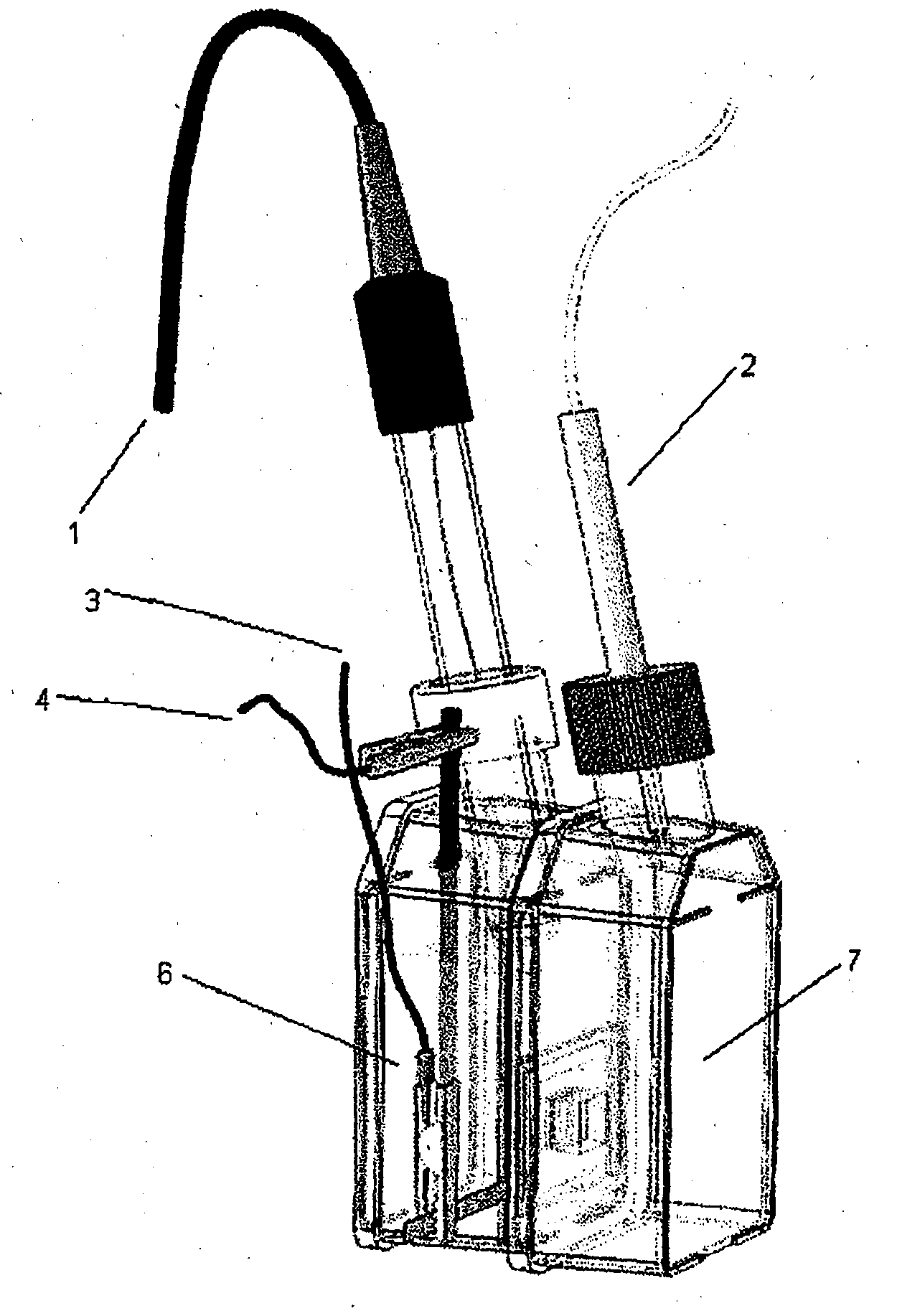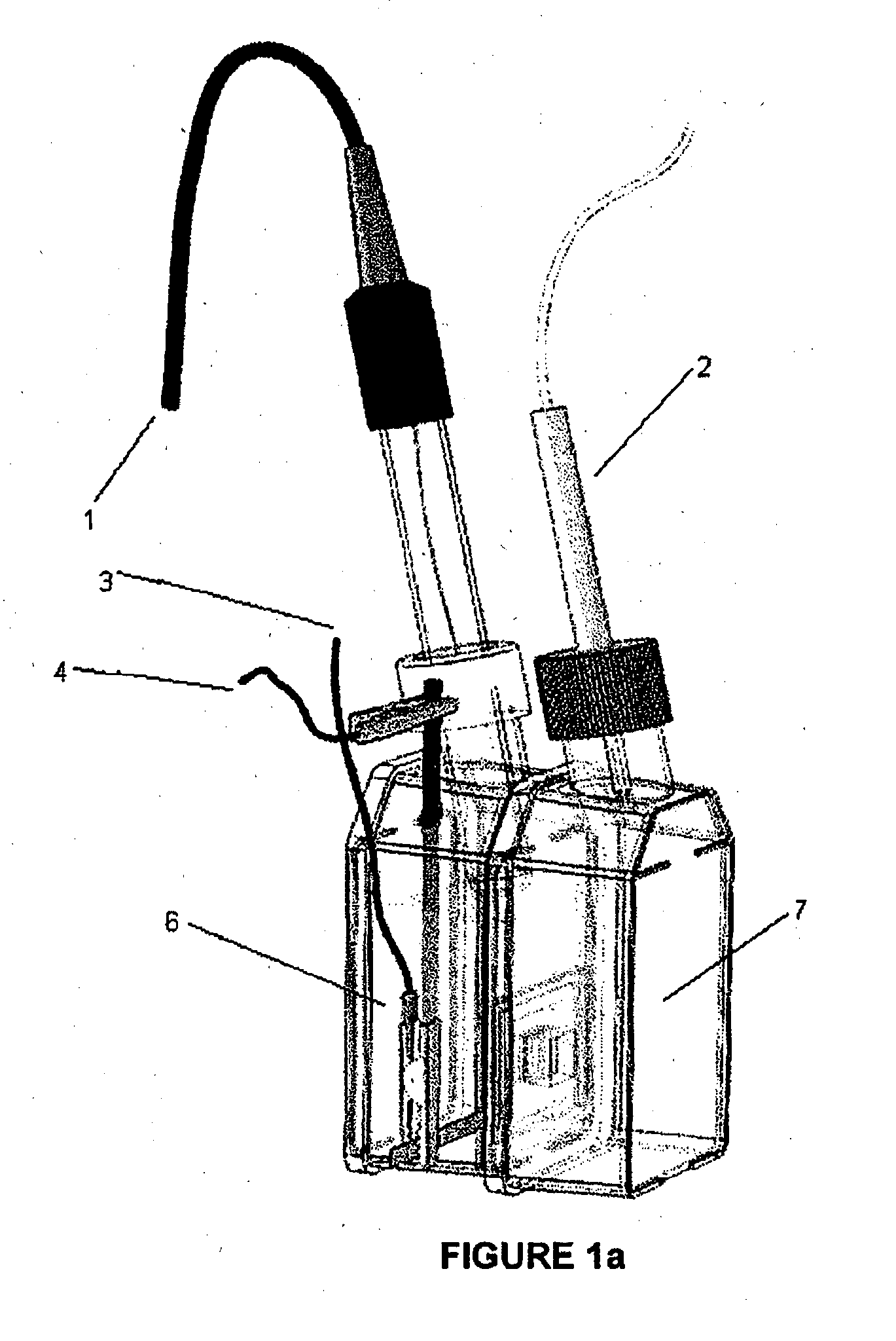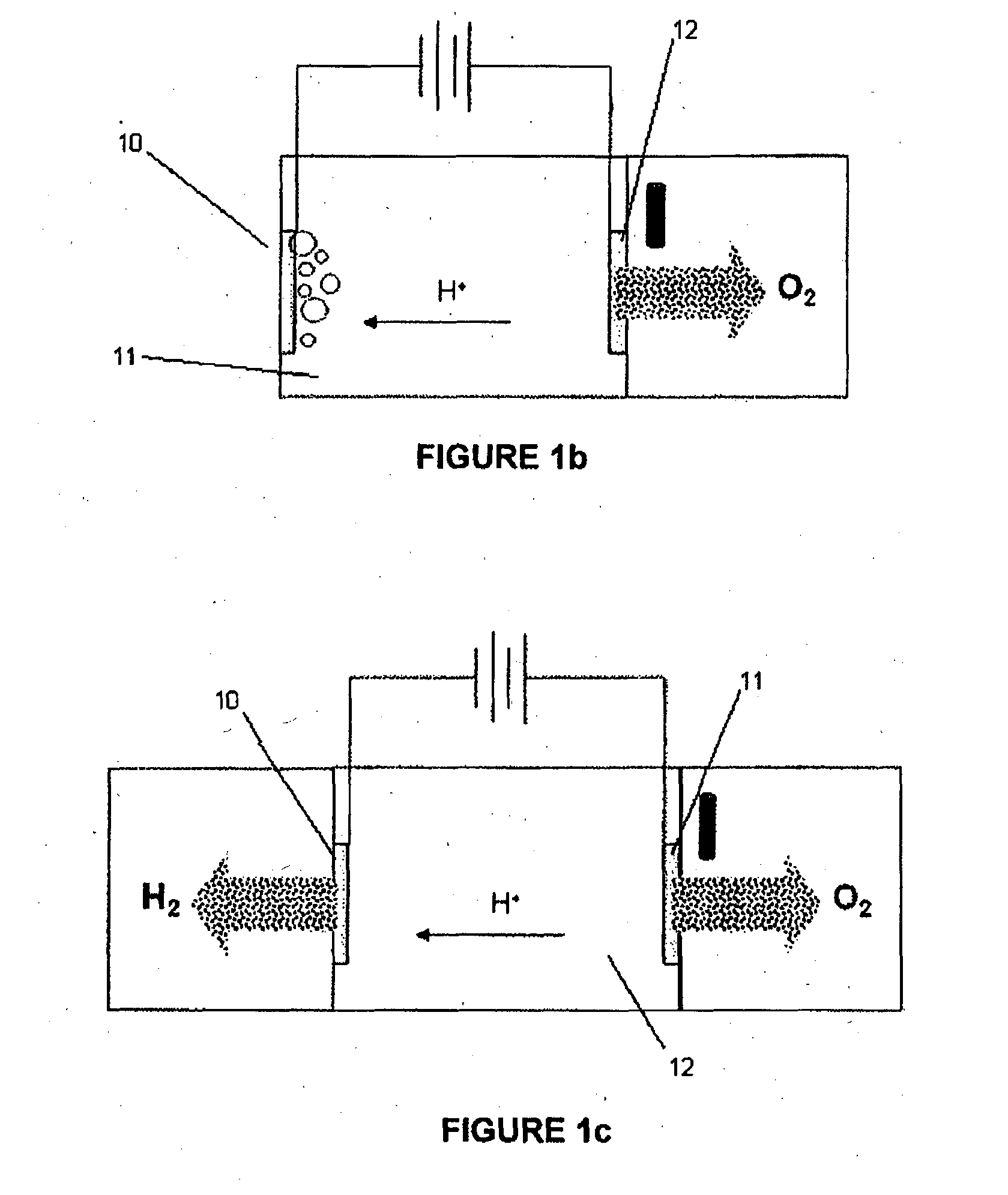Breathable electrode and method for use in water splitting
a technology of electrodes and water splitting, applied in the field of electrochemical reactions, can solve the problems of high resistance through membranes and ultra pure water, high electrode overpotential, and high cost, and achieve the effects of reducing over potential, reducing pressure in the bubble, and increasing the efficiency of water splitting cells
- Summary
- Abstract
- Description
- Claims
- Application Information
AI Technical Summary
Benefits of technology
Problems solved by technology
Method used
Image
Examples
Embodiment Construction
[0068]The invention will be further described with reference to the following non-limiting examples. More specifically, three membrane electrodes with different morphology and pore sizes and shapes were prepared and studied. Platinum, the most well studied catalyst was used as the model catalyst material. However the electrodes of the present invention should not be interpreted as being limited to this catalyst and can be operated with many catalysts.
Membrane Treatment and Pt Coating
[0069]PTFE membranes (Goretex®) was obtained from Gore Inc and Mitex™ (10 μm) was obtained from Millipore. Au mylar (2.5 Ohm / square) was purchased from CPFilms Inc. Maleic anhydride was obtained from Sigma-Aldrich. Preparation of the Goretex®, Mitex™; polyethylene (PE) and polypropylene (PP) membranes prior to Pt coating was similar to previous work described by Winther-Jensen et al entitled ‘High rates of oxygen reduction over a vapor phase-polymerized PEDOT electrode’ in Science 2008; 321:671-4. Maleic...
PUM
| Property | Measurement | Unit |
|---|---|---|
| pore size | aaaaa | aaaaa |
| pore size | aaaaa | aaaaa |
| pore size | aaaaa | aaaaa |
Abstract
Description
Claims
Application Information
 Login to View More
Login to View More - R&D
- Intellectual Property
- Life Sciences
- Materials
- Tech Scout
- Unparalleled Data Quality
- Higher Quality Content
- 60% Fewer Hallucinations
Browse by: Latest US Patents, China's latest patents, Technical Efficacy Thesaurus, Application Domain, Technology Topic, Popular Technical Reports.
© 2025 PatSnap. All rights reserved.Legal|Privacy policy|Modern Slavery Act Transparency Statement|Sitemap|About US| Contact US: help@patsnap.com



